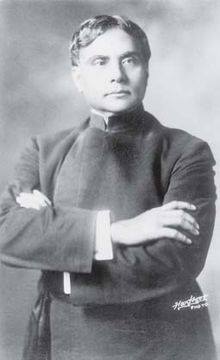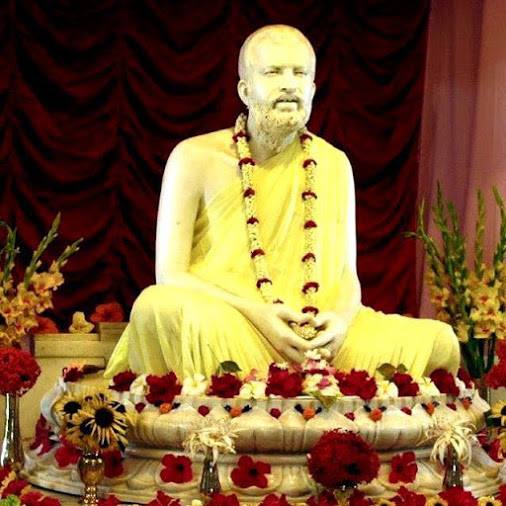PHILOSOPHY : Swami Mukundananda
========================================================================
Chinmaya International Foundation (CIF)
03.09.2022
Hari Om. On 31 August, the auspicious occasion of Ganesh Chaturthi, the CIF Family, including staff and Vedanta Sadhaka Course (VSC) students, gathered together to welcome Ganapati Bappa, with decorations in the Illom and preparation of naivedya and sweets. Br. Ved Chaitanya led the team to setup the altar and install the murti of Ganesha Bhagavan, and offered an elaborate puja with abhisheka of 11 dravyas. VSC Students along with CIF Staff and residents devotedly chanted the Ganapati Atharvashirsha 21 times followed by an offering of Ashtottara namavali. Special naivedya of modak, sweets and fruits was offered to Bhagavan. The puja concluded with joyous chanting of the Ganapati Aarti and chants of “Ganapati Bappa Moraya!”
========================================================================
Saturday, September 03, 2022. 09:00.
PHILOSOPHY :
========================================================================
There are 8.4 million species on the earth planet. Amongst them, the human form of life is the only one where spiritual practice is possible, to continue to grow and evolve.
Did you ever wonder why we are here on this earth? Do you know what our purpose in life is? For answers to such questions of paramount importance, we need to go to our scriptures that impart sublime knowledge. Only then, we will know the purpose of our life’s journey. Once we discern the goal of this journey, this world looks different and we recognize the value of this human life.
Therefore, let us partake the divine knowledge and wisdom bestowed upon us by the Supreme Lord, and embark on the path to eternal joy and peace.
=========================================================================
Introduction :
There are three main paths that have been described by the holy scriptures which lead to God. Karm, Jñana, and Bhakti. There is no other path to God.
The great scripture Shrimad Bhagavatam, contains a very significant dialogue between Lord Krishna and the highly revered jñani, Uddhav who was a dear friend of the Lord Himself. This event took place over 5000 years ago just before the dawn of this new age, Kali-yug. A jñani is a highly knowledgeable scholar who has mastered the Vedic scriptures.
Uddhav questions, "O Lord! There are myriad paths propagated by various spiritualists. Which of those are true and which ones are to be shunned? Why did so many paths come into existence? When a person hears and reads about thousands of different paths, he is confused and cannot decide the right path to follow because he is ignorant. I beg you to solve this confusion. A blind man cannot take a decision about matters related to sight."
This question has paramount importance for all us, especially because it addresses an equally precarious conundrum in our minds about the current state of faith in spirituality and the abundance of masters, mystics, and gurus. It is astonishing that, what was discussed over 5000 years ago, bears significance even today more than ever before!
Those who read and contemplated on the words of the Vedas had varied characters, personalities, and temperaments. They had different sanskars (tendencies) accumulated over different lifetimes. Their attitude, interests, and nature were also variegated.As a result, those who were of a sattvik temperament made sattvik or pious interpretation of the Vedas; those with rajasik temperament made rajasik interpretation; those with tamasik temperament made tamasik interpretation of the Vedas. Thus, various paths came into existence. Some paths also came about by tradition. People started to follow certain rituals and norms because it has been there for generations."
Shree Krishna explained to Uddhav that because of the varied nature and character of the persons interpreting the Vedas, they were misread and misrepresented. This resulted is many false paths coming into existence.
--------------------------------------------------------------------------------------------------------------------------
How many paths exist that leads to God?
There is a name for God in the Vedas: Sat-Chit-Anand. These three, sat, chit, and anand refer to three energies of God. The nature of sat is action, or Karm. The nature of chit is knowledge or Jñana and the nature of anand is devotion, or Bhakti. Hence, God has three aspects to His nature—Karm, Jñana, and Bhakti.
We tiny souls are small parts of God, and hence we too have the same three aspects to our nature, although smaller in measure. Just like a drop of water has the qualities of the ocean.The three aspects of our nature are Karm, or work, Jñana, or knowledge, and Bhakti, or devotion. Accordingly, the scriptures state three paths to God:
The various paths of achieving union with God are referred to as different systems of Yog, such as karm yog, jñana yog, aṣhṭāṅg yog, and bhakti yog. Thus, spiritual practitioners are in general called yogis, or sadhaks. Occasionally, the word Yog refers specifically to the process of aṣhṭāṅg yog.
Jñana Yog (Path of Knowledge):
In this system of Yog, the emphasis is on self-knowledge. The Gita occasionally mentions it as sānkhyayog as well. Through the practice of intellectual discrimination, the jñani focuses on realizing the self, which is distinct from all bodily designations and contaminations. Self-realization is considered as the ultimate goal of perfection. The practice of jñana yog is based on self-effort, without support of the grace of God. Hence, it is a difficult path and there is danger of downfall at every step.
Aṣhṭāṅg Yog (The eight-fold path):
It involves a gradual process of purification beginning with mechanical practices and progressing to the control of the mind. In it, the life force is raised through the suṣhumṇā channel in the spinal column. It is brought between the eyebrows, which is the region of the third eye (the inner eye). It is then made to focus on the Supreme Lord with great devotion. This process was presented in a structured system of practice containing eight stages by Maharshi Patanjali in the famous text written by him, called Yog Sutras. Thereby, it came to be known as aṣhṭāṅg yogor the eight-fold system of Yog. A variation of this is haṭha yog, in which the emphasis is on austerities. The haṭha yogi strives to gain mastery over the mind and senses by exercising the force of will power.
In many places, the Vedic literature also states that there are only three paths to God realization—karm yog, jñana yog, and bhakti yog. In such a classification, aṣhṭāṅg yog is included in jñana yog.
Karm Yog (Path of Action):
Karm refers to performing one's worldly obligations and responsibilities, while Yog refers to union with God. So, the practice of uniting the mind with God even while doing one's obligatory duties in the world is karm yog. This requires detaching the mind from the fruits of actions, by developing a resolute decision of the intellect that all work is meant solely for the pleasure of God. Thus, the Gita occasionally refers to it as buddhi yog, or the Yog of the intellect. Since most people practice spirituality while living in household life and discharging their worldly duties, karm yog becomes necessary for them alongside with any other system of Yog they may pursue.
Bhakti Yog (Path of Devotion):
This path involves attaching the mind to the names, forms, virtues, pastimes, etc. of God through selfless and exclusive love. One develops a loving relationship with God by seeing him as the eternal father, mother, friend, master, and soul-beloved. By surrendering to him and uniting the individual will with the divine will, the devotee attracts the grace of God and achieves the goal of spiritual perfection more easily than by the other paths. Although the Bhagavad Gita embraces all the systems of Yog, it consistently emphasizes the path of bhakti as the superior system of Yog. This repeated pronouncement by Shree Krishna that he can only be known through bhakti is highlighted in different places to dispel the misconception amongst some about bhakti being an inferior system of Yog.
Let us learn the foundations of each of these paths.
*****
========================================================================











Comments
Post a Comment